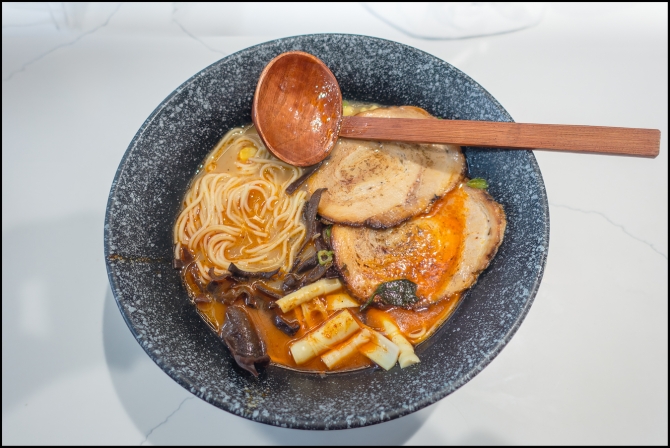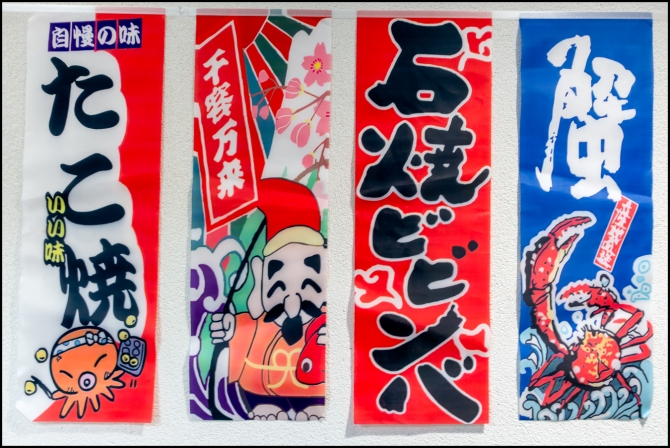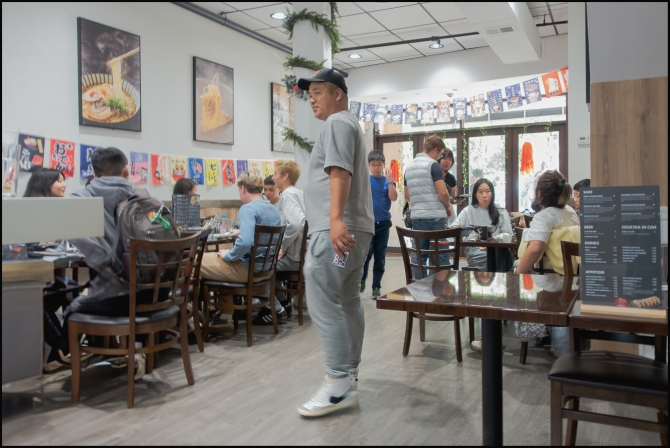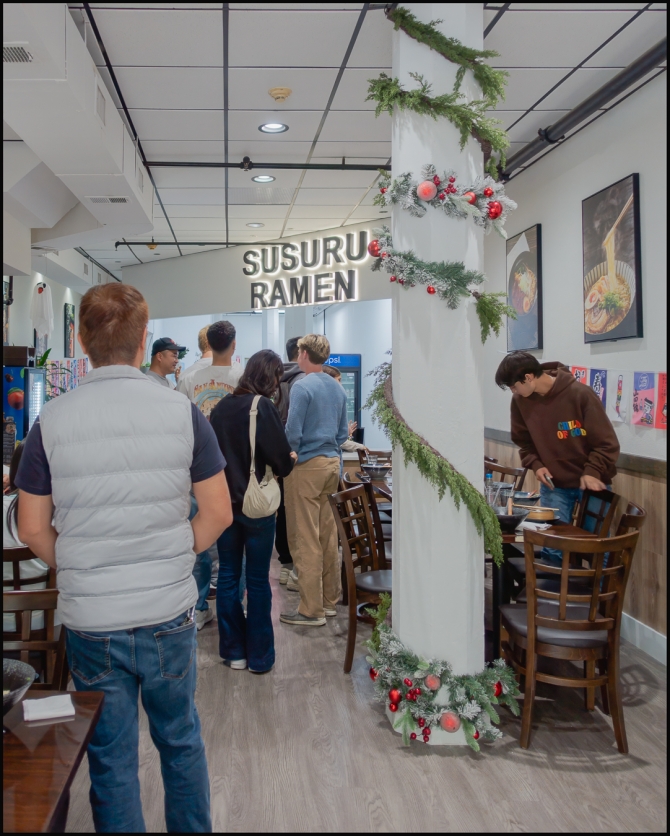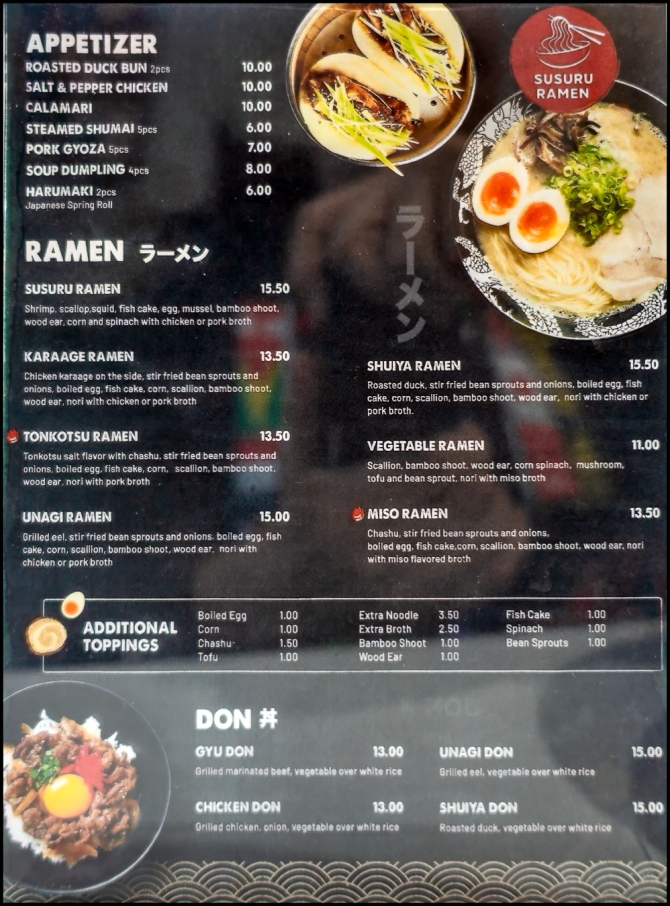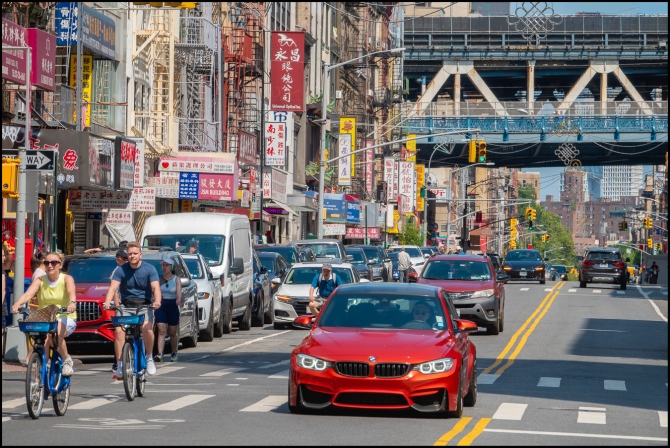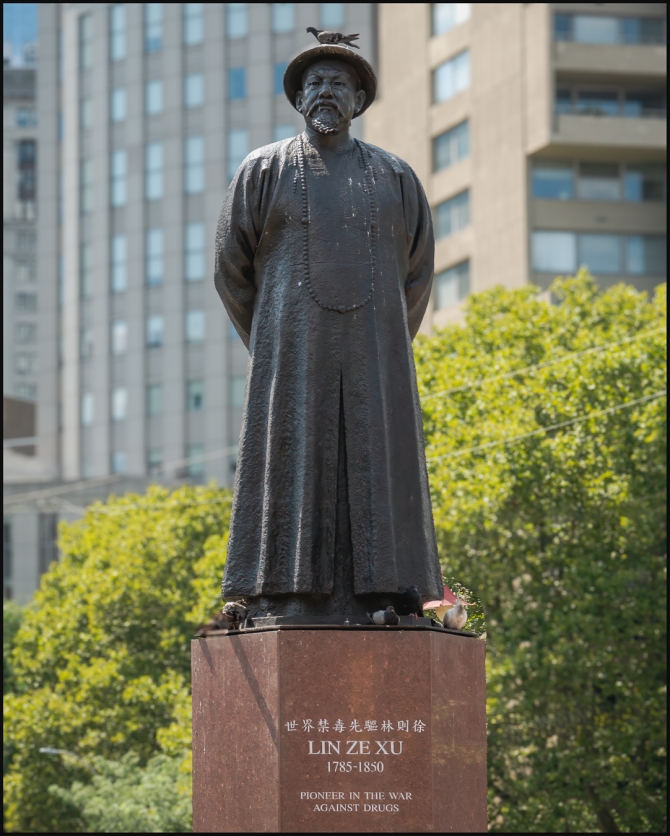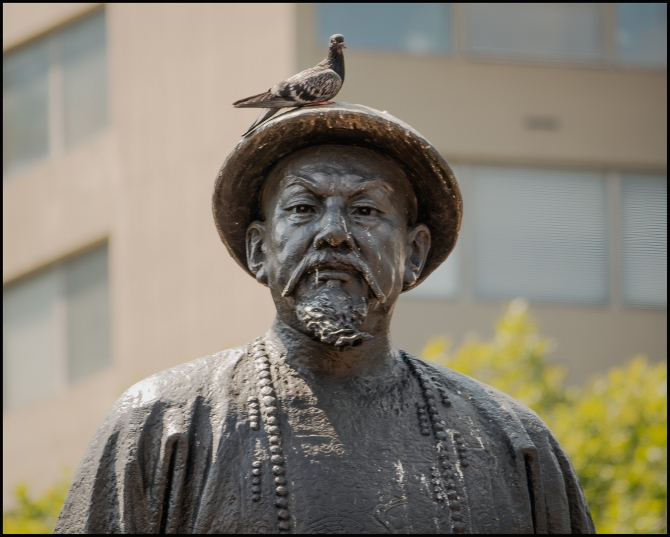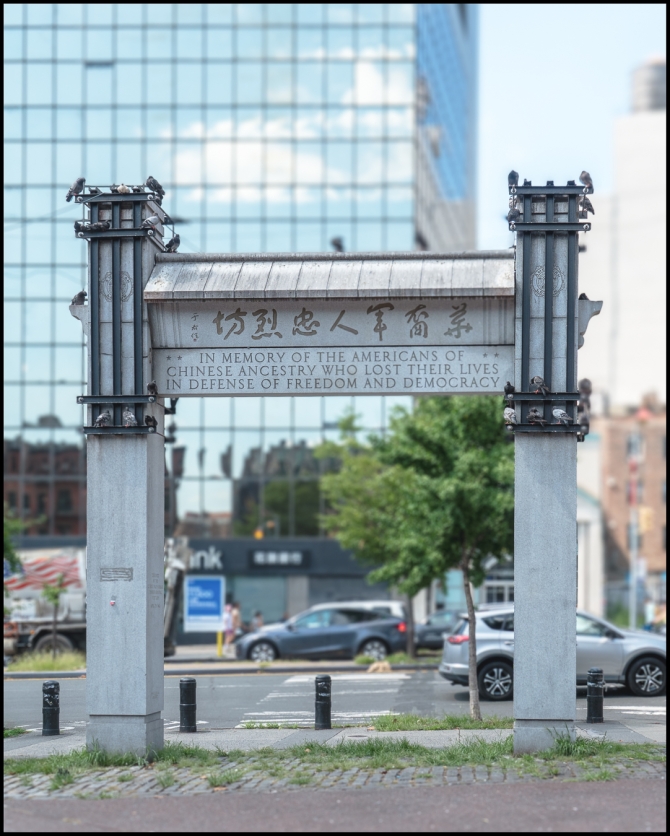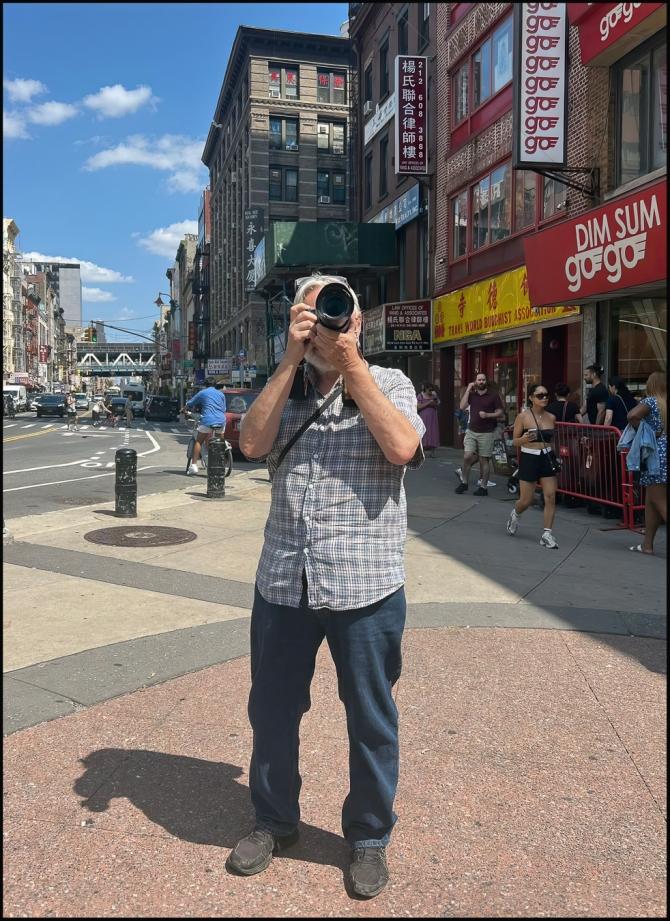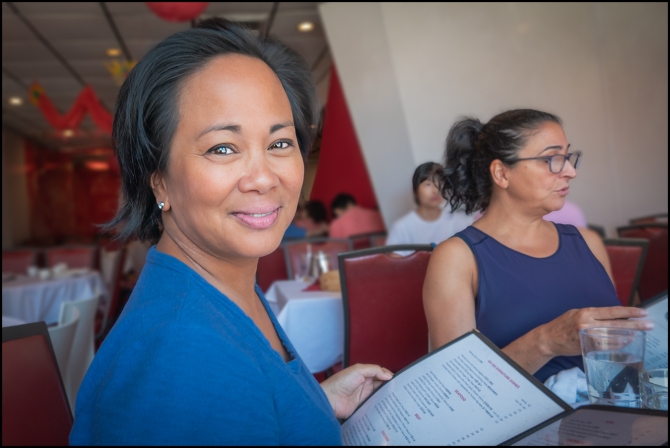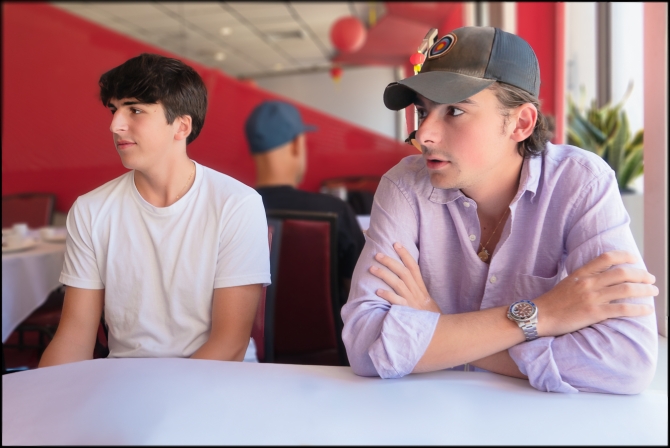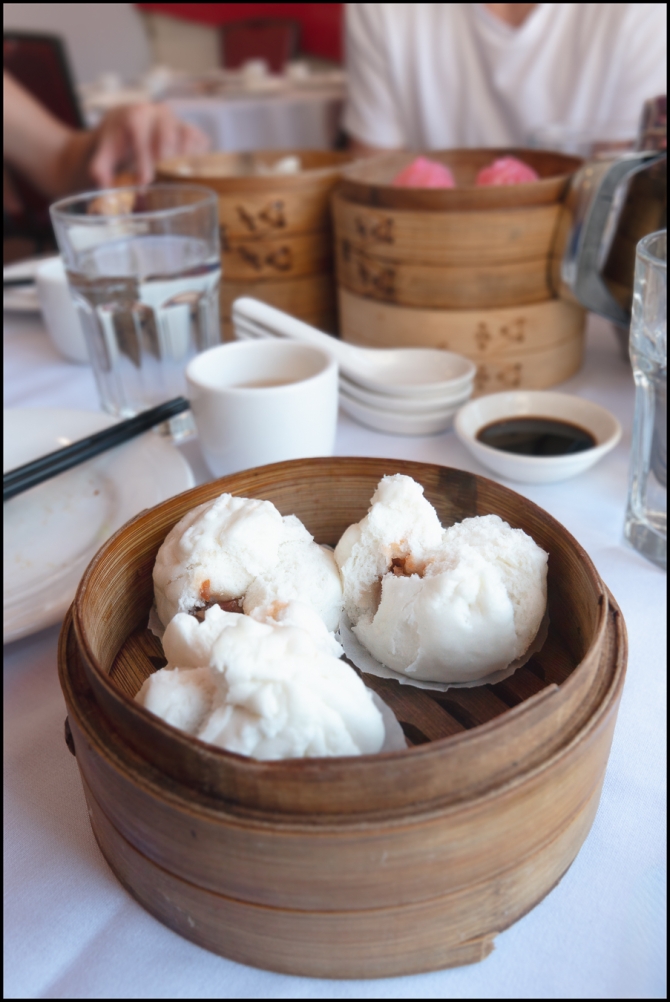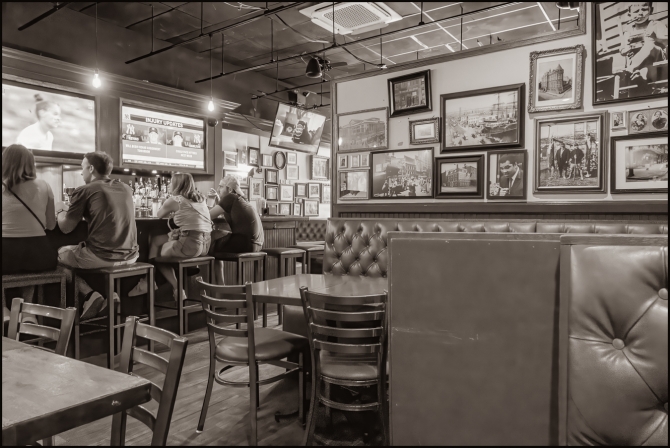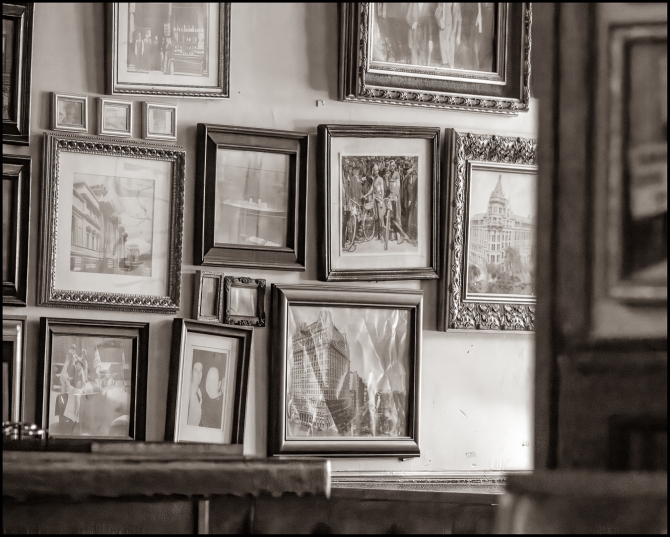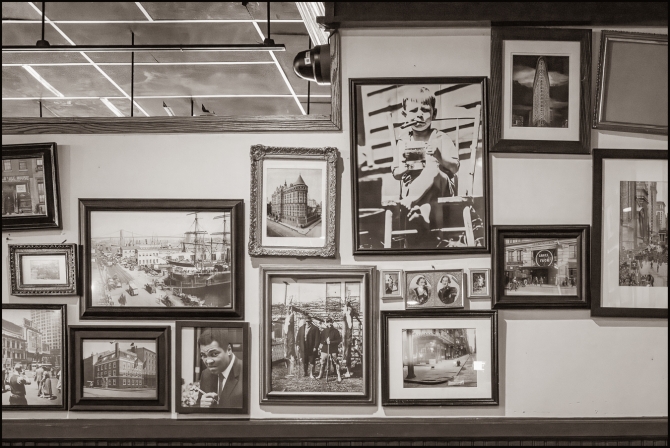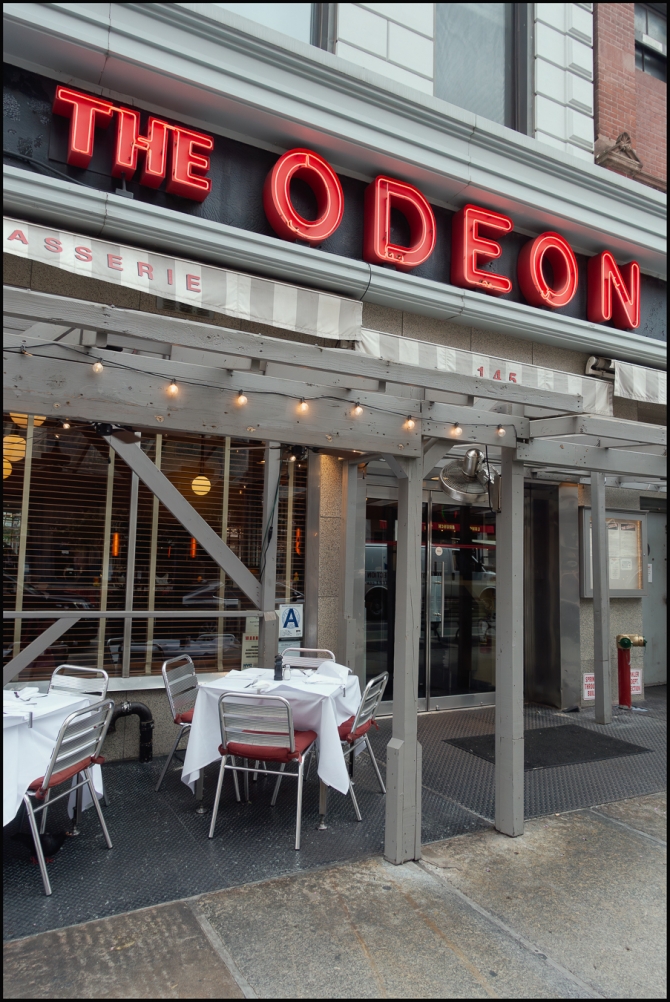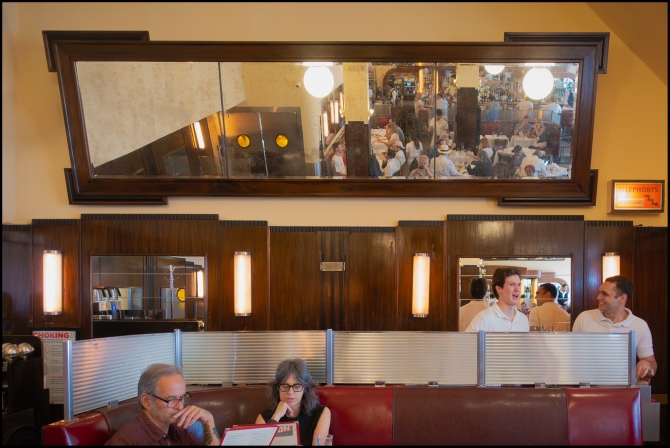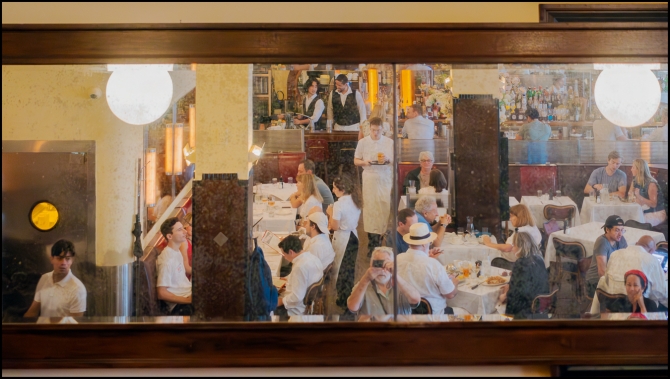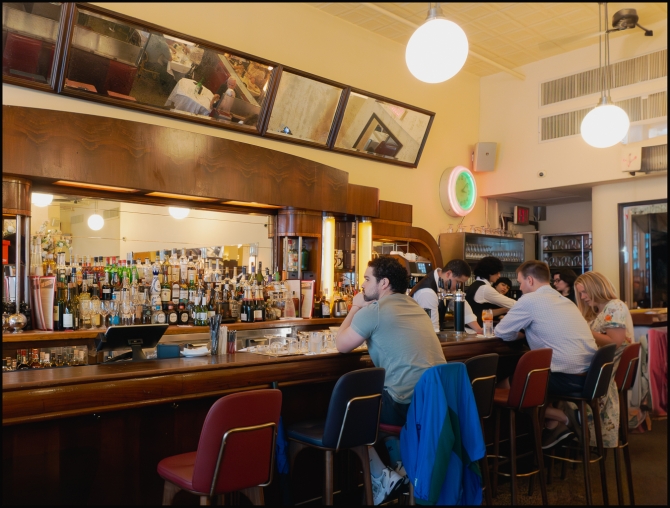As mentioned in an earlier post, the reason we stayed at The Roxy was because we were going to spend the evening at, Django, a jazz club on the lower level of the hotel.
Django’s website describes the club as follows:
Descend into The Django and you’ll feel like you’ve entered another world. The subterranean jazz club, with its vaulted ceilings and exposed brick walls, was modeled after the boîtes of Paris. The venue consists of two cocktail bars, open dining space and a stage for live performances with the ne plus ultra: a state-of-the-art Meyer Sound system. The Django has become a place to call home for musicians and audiences alike. Providing opportunities for rising stars, seasoned performers, and eager audiences to enjoy a range of jazz music 7 nights a week complemented by a hand-crafted cocktail program by award-winning mixologist Natasha David and an elevated dinner menu.
We were supposed to see two performers: Loston Harris and Benny Benack III. Before going down to the club we met with some of Jasmine’s friends in the lobby, one of them Scott McDermott a well-known photographer. I don’t get a chance to talk to other photographers, especially those of Scott’s caliber and I was really enjoying the conversation. Unfortunately, this meant that we were rather late and, I believe, missed most of the first set.
However, we were able to watch all of the second set. I’m not usually a fan of Jazz, but I enjoyed Benny Benack (see pictures below, except for the first two).
Taken with a Sony RX100M3

